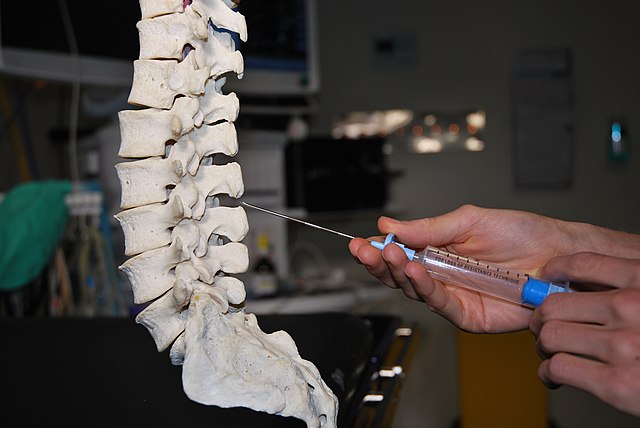Anesthesia plays a pivotal role in modern medicine, ensuring patients undergo surgical procedures with minimal pain and discomfort. Among the various anesthesia techniques, spinal and epidural anesthesia stand out as effective methods for providing regional anesthesia. In this comprehensive guide, we will delve into the intricacies of spinal and epidural anesthesia, exploring their mechanisms, applications, benefits, and potential risks.
Understanding Spinal Anesthesia
Spinal anesthesia, also known as subarachnoid block, involves injecting anesthetic medication directly into the cerebrospinal fluid in the subarachnoid space of the spinal cord. This method produces a rapid and profound loss of sensation and motor function below the level of injection. It is commonly used for surgeries involving the lower abdomen, pelvis, and lower extremities.
Mechanism of Action
The spinal cord is a crucial part of the central nervous system, transmitting signals between the brain and the rest of the body. Spinal anesthesia interrupts these signals by blocking nerve impulses in the spinal cord, leading to temporary numbness and muscle relaxation in the lower part of the body.
Application of Spinal Anesthesia
Spinal anesthesia finds widespread use in various surgical procedures, including but not limited to:
- Orthopedic Surgeries: Spinal anesthesia is frequently employed for procedures such as hip and knee replacements, where precise control of pain and muscle relaxation is essential.
- Gynecological Surgeries: It is commonly used for cesarean sections and other gynecological procedures, providing effective pain relief while allowing the patient to remain conscious during childbirth.
- Urological Surgeries: Procedures involving the lower urinary tract, such as bladder surgeries, can benefit from spinal anesthesia.
Advantages of Spinal Anesthesia
- Rapid Onset: One of the primary advantages of spinal anesthesia is its quick onset. Patients experience numbness and pain relief within minutes of the injection.
- Reduced Systemic Effects: Since the anesthesia is localized to the spinal cord, the dose required is lower compared to general anesthesia, minimizing the risk of systemic side effects.
- Improved Postoperative Pain Control: Spinal anesthesia can contribute to better postoperative pain management, reducing the need for opioids and promoting a quicker recovery.
Understanding Epidural Anesthesia
Epidural anesthesia involves the injection of anesthetic medication into the epidural space, which is the outermost part of the spinal canal. Unlike spinal anesthesia, epidural anesthesia provides a more targeted and adjustable form of pain relief. It is commonly used for labor and delivery, as well as a variety of surgical procedures.
Mechanism of Action
The epidural space contains nerves that transmit signals related to pain. By injecting anesthesia into this space, the nerve impulses are blocked, resulting in pain relief in the specific area of the body served by those nerves. Unlike spinal anesthesia, epidural anesthesia allows for a more gradual onset and can be adjusted to provide continuous pain relief.
Application of Epidural Anesthesia
- Labor and Delivery: Epidural anesthesia is widely used during childbirth to alleviate the pain of contractions while allowing the mother to remain conscious and actively participate in the delivery process.
- Surgical Procedures: Epidural anesthesia is employed in various surgeries, particularly those involving the chest, abdomen, and lower extremities. It provides effective pain control during and after the procedure.
- Chronic Pain Management: Epidural injections are also used for managing chronic pain conditions, such as herniated discs and spinal stenosis, providing localized relief to patients with persistent pain.
Advantages of Epidural Anesthesia
- Adjustable Pain Control: An epidural catheter allows for the continuous infusion of anesthesia, enabling healthcare providers to adjust the level of pain relief according to the patient’s needs.
- Extended Duration: Epidural anesthesia can be maintained for an extended period, making it suitable for surgeries with prolonged durations or for managing pain during labor that may last for hours.
- Minimal Systemic Effects: Similar to spinal anesthesia, epidural anesthesia minimizes the systemic effects associated with general anesthesia, reducing the risk of complications.
Potential Risks and Complications
While both spinal and epidural anesthesia are generally considered safe, they are not without risks. Some potential complications include:
- Hypotension: A common side effect, particularly with spinal anesthesia, is a sudden drop in blood pressure. This can be managed with intravenous fluids and medications.
- Headache: A post-dural puncture headache can occur if the dura mater is inadvertently punctured during the insertion of the needle. This complication is more common with spinal anesthesia.
- Infection: Any invasive procedure carries a risk of infection. Strict aseptic techniques are employed during the administration of both spinal and epidural anesthesia to minimize this risk.
- Nerve Damage: While rare, nerve damage can occur, leading to temporary or, in extremely rare cases, permanent neurological deficits.
Conclusion
In conclusion, spinal and epidural anesthesia are valuable tools in modern anesthesia practice, offering targeted and effective pain relief for a variety of surgical procedures. Understanding the mechanisms, applications, and potential risks of these techniques is crucial for both healthcare providers and patients. As technology and medical knowledge continue to advance, the refinement of anesthesia techniques will further enhance patient safety and comfort in the operating room and beyond.



